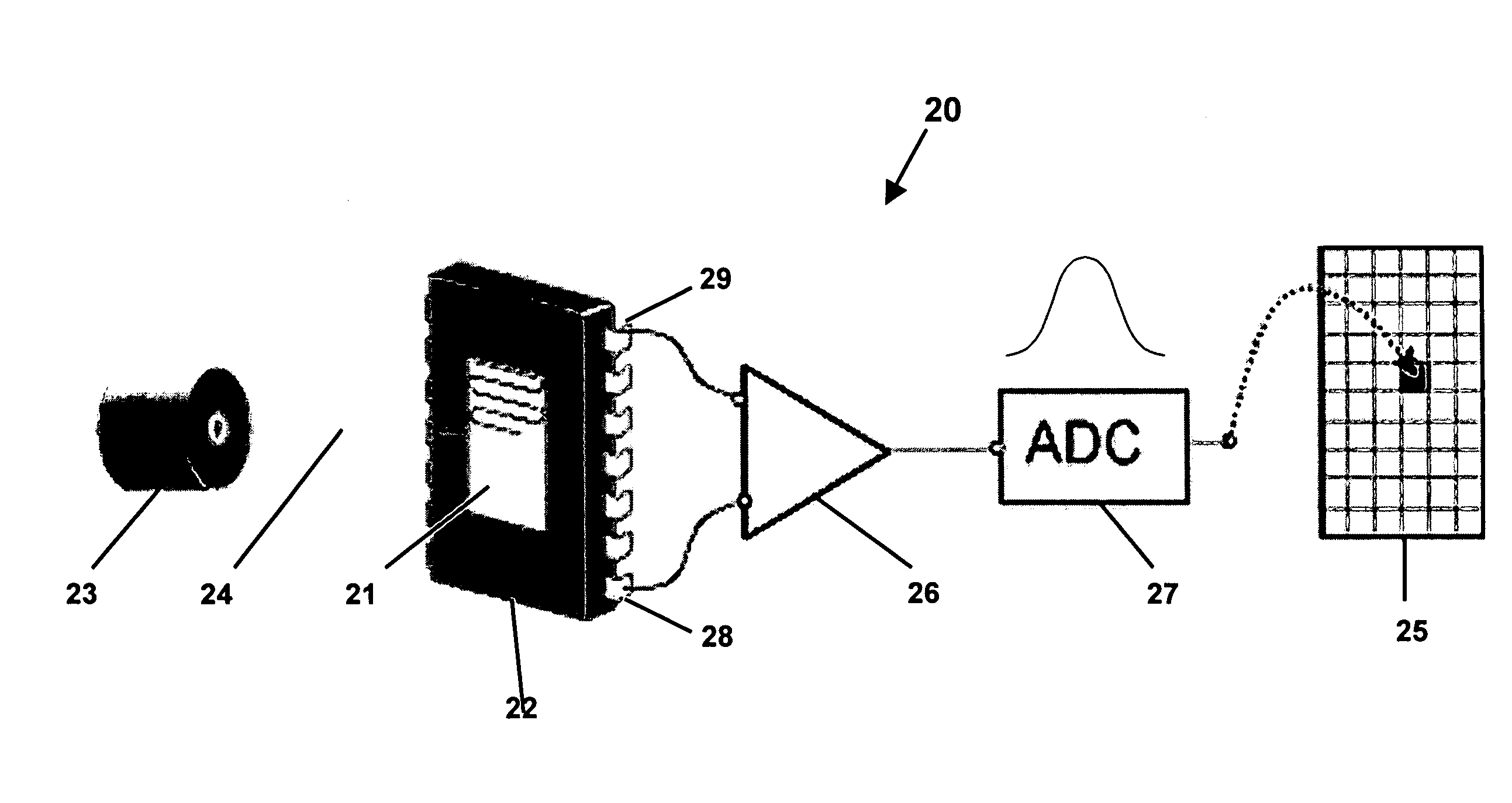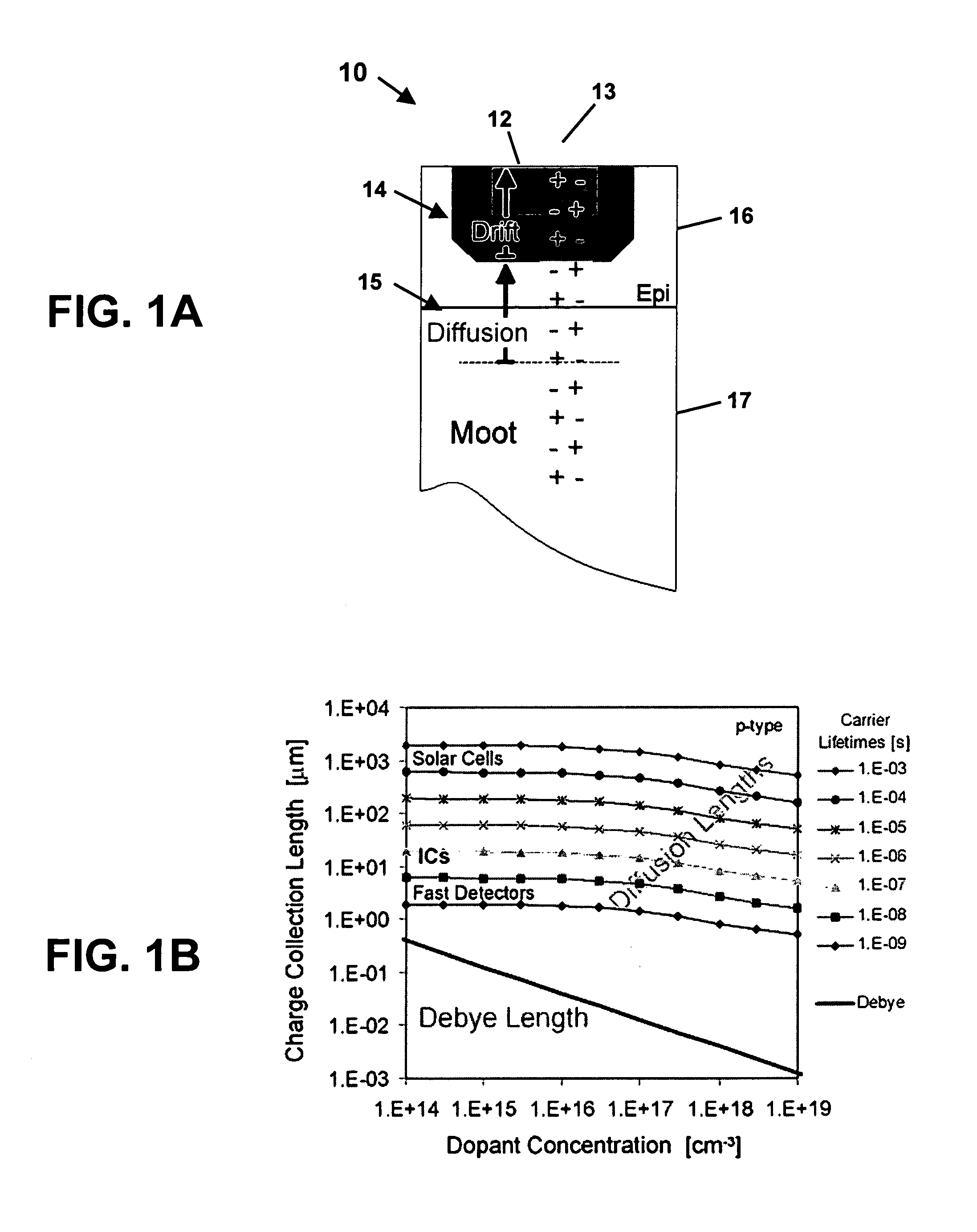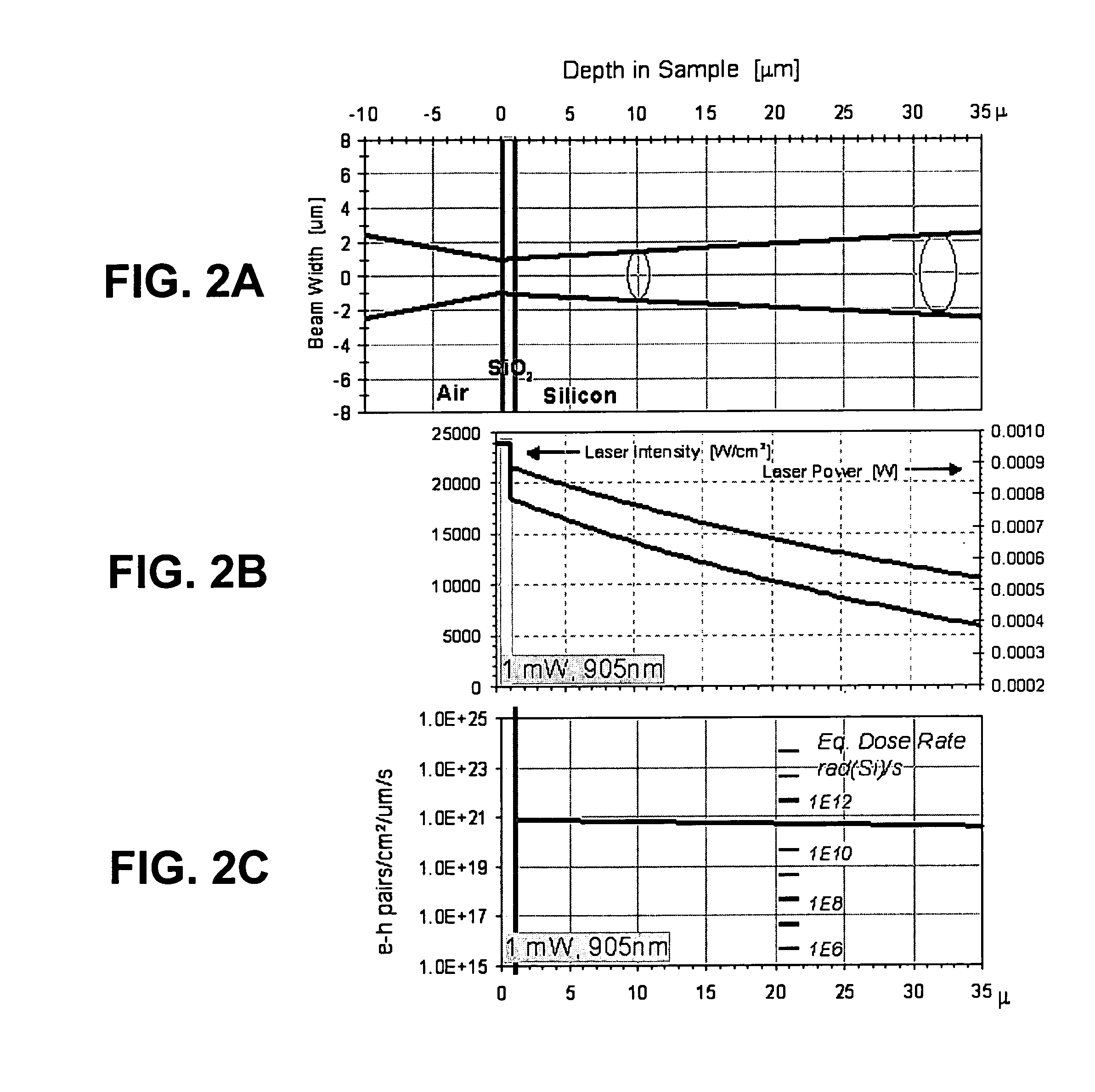Laser-based irradiation apparatus and methods for monitoring the dose-rate response of semiconductor devices
a laser-based irradiation and device technology, applied in individual semiconductor device testing, instruments, electroluminescent light sources, etc., can solve the problems of devices becoming even more sensitive to transient ionizing radiation effects, known deleterious effects on semiconductor devices and circuits, and degrading the performance of electronic devices
- Summary
- Abstract
- Description
- Claims
- Application Information
AI Technical Summary
Benefits of technology
Problems solved by technology
Method used
Image
Examples
Embodiment Construction
[0027]For use in radiation effects testing, infrared light can replicate the charge collection effects of far more penetrating ionizing radiations. This replication is possible, since only the charge produced in the first few tens of microns of silicon contributes to charge collection within the electrically active regions in most modern semiconductor devices. Electron-hole pairs produced deeper in the device by more penetrating radiations, such as x-rays, gamma-rays, or energetic electrons or ions, recombine before collection into circuit structures near the device surface, and therefore do not affect the normal electrical operation of the device. Consequently, the charge generated in the electrically active regions of the device by the deposition of the laser energy can be made comparable to the total charge generated in those same regions by far more penetrating radiation.
[0028]As shown in FIG. 1A, photocurrent collected in the electrically active region (e.g., a p-n junction) 12...
PUM
 Login to View More
Login to View More Abstract
Description
Claims
Application Information
 Login to View More
Login to View More - R&D
- Intellectual Property
- Life Sciences
- Materials
- Tech Scout
- Unparalleled Data Quality
- Higher Quality Content
- 60% Fewer Hallucinations
Browse by: Latest US Patents, China's latest patents, Technical Efficacy Thesaurus, Application Domain, Technology Topic, Popular Technical Reports.
© 2025 PatSnap. All rights reserved.Legal|Privacy policy|Modern Slavery Act Transparency Statement|Sitemap|About US| Contact US: help@patsnap.com



